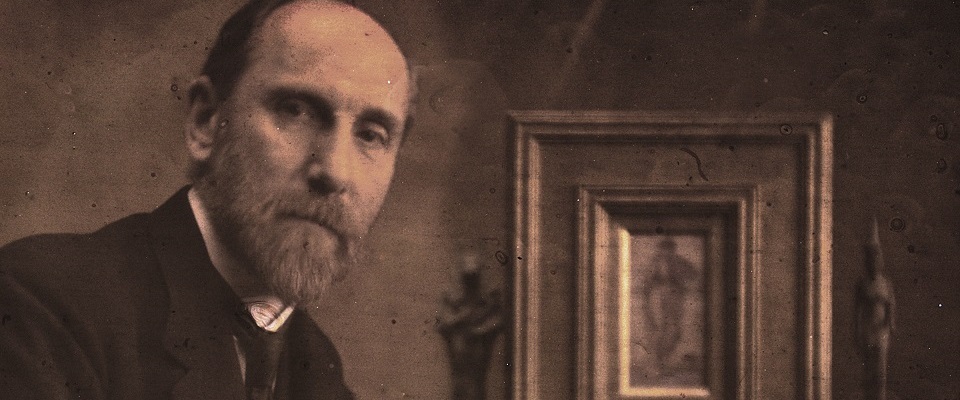Freer and Japan’s Modern Art
When Freer first visited Japan in 1895, he went as a tourist and not as a connoisseur of Asian art. But by his next visit in 1907, he was attracting the attention of Japanese dealers and collectors. Freer built his reputation as a collector of premodern works, but he also visited Japan between 1895 and 1913, when artists were defining their own identities. Some asserted a continuity with the past, others broke with it, but all were interested in creating a viable market for their work.
Two advisors encouraged Freer to support contemporary artists. Scholar Ernest Fenollosa (1853–1908) had urged the struggling painters of the once-powerful Kanō school to adapt their styles to appeal to international collectors. He recommended their works to Freer, who acquired a select group, including several by Kanō Hōgai (1828–1888) and Hashimoto Gahō (1835–1908). These artists depicted traditional subjects with modeling of figures, shading, perspective, and other Western techniques.
Hara Tomitaro (1868–1939) was the scion of a wealthy silk-producing family and, like Freer, a collector of premodern Chinese and Japanese art. He too helped emerging Japanese painters search for a modern visual vocabulary with international appeal, using his own collection to expose them to works by Sōtatsu and his followers. In 1915, Hara’s son Zenichirō asked whether Freer was interested in the young artists embraced by his father. Freer politely demurred. Gahō and Hōgai would represent the extent of his ventures into twentieth-century Japanese painting. Of the many choices available to Freer on the modern stage, he opted for the most conservative.
Explore
Galleries »
Flowers and Grasses of the Four Seasons
Right Screen »
Left Screen »
Timeline »
Rotation Schedule »









